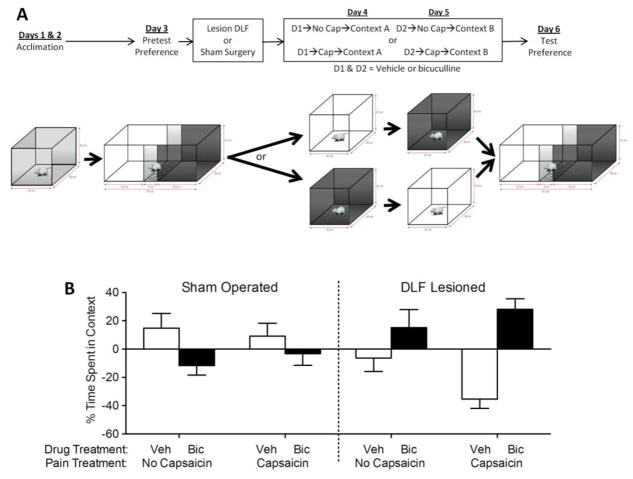Fig. 6.
DLF lesions alter how bicuculline affects place conditioning. (A) The experimental design is illustrated at the top of the figure. After acclimation and a pretest of baseline preferences, rats received bilateral DLF lesions or a sham surgery. Over the next two days (D1 & D2), they received bicuculline (i.t.) or its vehicle prior to being placed in one of two distinctive contexts (A and B). On both days, half of the rats had topical capsaicin applied after the i.t. injection. The relative aversion to each set of contextual cues was then assessed in a preference test. (B) The left and right panel depicts sham-operated and DLF lesioned groups, respectively. Each subject had received vehicle (Veh; white bar) on one conditioning day and bicuculline (Bic; black bar) on the other. The adjoining white and black bars indicate the relative preference for each context within a group. The four groups differed in whether they had received a sham surgery (left) or DLF lesions (right) and in whether or not they were treated with capsaicin prior to context exposure. The y-axis depicts the change from baseline preferences. Error bars depict ± SEM.

